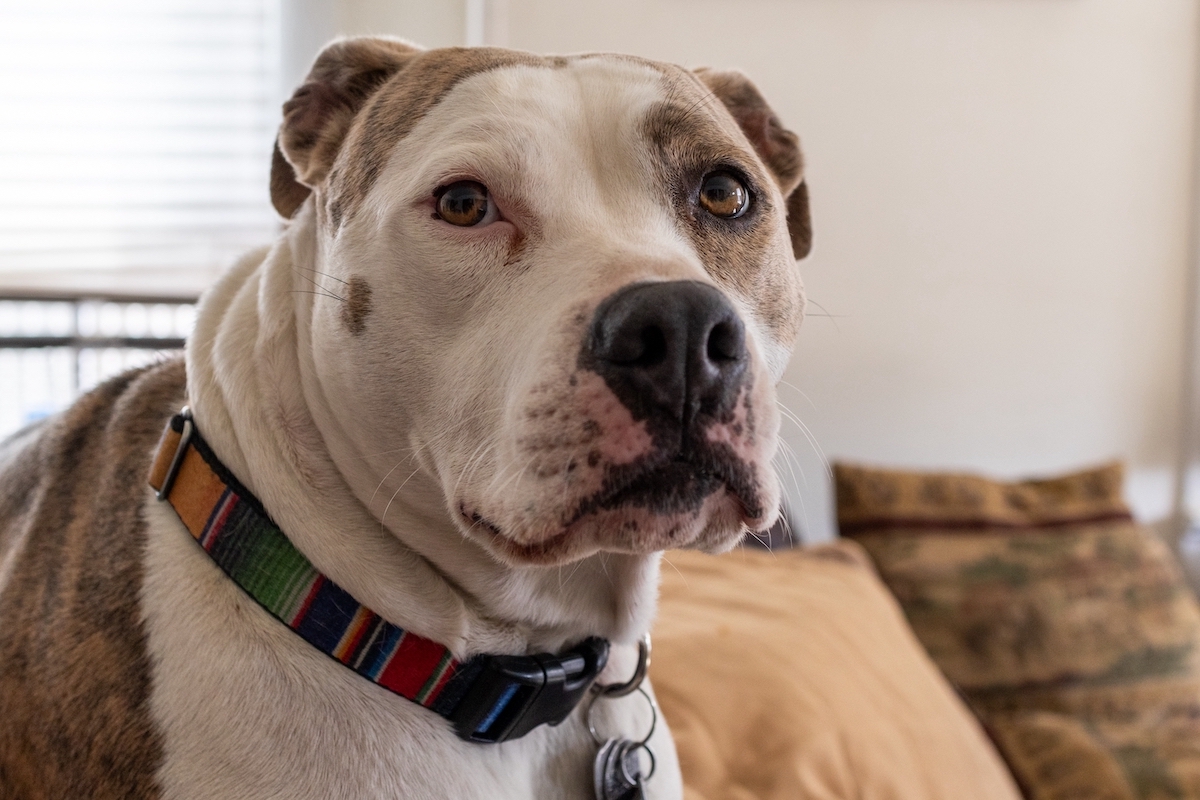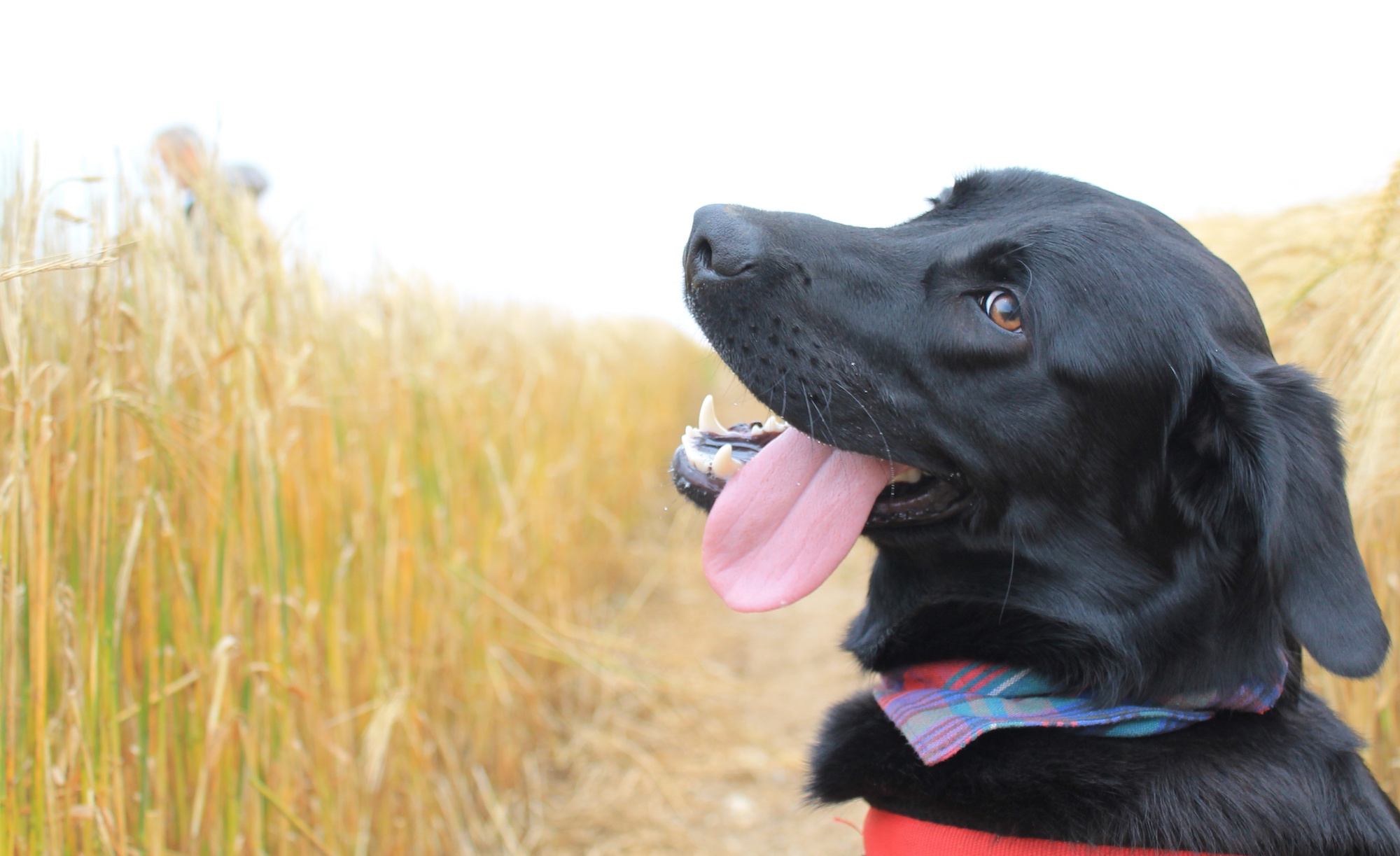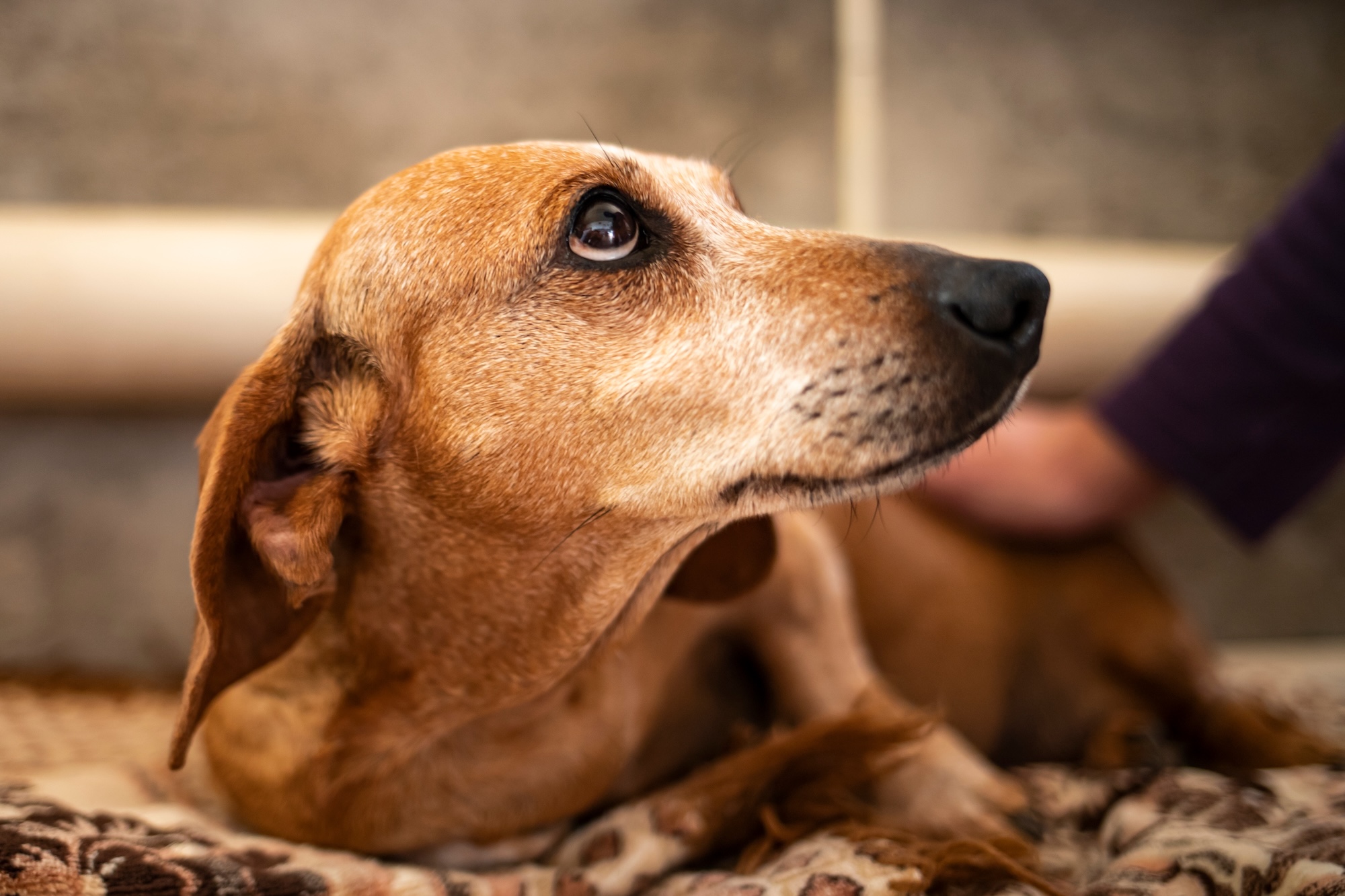The anal sacs, sometimes colloquially referred to as the “anal glands,” are two small, oval-shaped structures—one on each side of a dog’s anus. They contain oil and sweat glands, and produce compounds thought to be involved in chemical communication (when dogs sniff each other’s backsides, they are reading the stories the anal glands have to tell).
When the anal sacs are functioning normally, you probably don’t even notice them. But when something goes wrong, they can cause a dog discomfort or even threaten their long-term well-being—so it’s important to keep an eye out for any signs that your dog isn’t feeling well. Here are some things you should know about the anal sacs and how they may impact a dog’s health.
What do the anal sacs do?
The glands in the sacs produce a fluid with a strong odor. The fluid usually comes out during dogs’ bowel movements. Many believe that the purpose of the fluid is to mark territory or to help lubricate and make dogs’ bowel movements easier.
Dr. Brian Collins, an extension veterinarian and faculty clinician at the Cornell University College of Veterinary Medicine, tells us that there are occassions other than bowel movements when a dog can express the glands in their anal sacs. “Sometimes the anal sacs will express for reasons such as when a dog gets excited or really nervous,” Dr. Collins explains. “Sometimes it’s during a veterinary visit,” he continues, “or maybe during a car ride—but that’s also normal, and not something to be concerned about.”
What can go wrong with them?
Problems that can afflict a dog’s anal sacs include:
Impaction: One common issue with a dog’s anal sacs is that they can become impacted, or blocked. Usually, dogs’ anal sacs express naturally during bowel movements. But when they’re impacted, this doesn’t happen on its own. If this problem is not addressed, it can lead to inflammation or infection—so it’s wise to have a veterinarian examine your dog as soon as you suspect impaction, and treat it if necessary.
Inflammation (anal sacculitis): If blocked anal sacs become infected, they can become inflamed. This can cause a dog considerable discomfort, and can also escalate into a dangerous abscess. It’s another reason to stay on top of any behavioral changes or signs that your dog doesn’t feel well.
Adenocarcinoma: This cancer is the most severe condition that can impact the anal sacs. Dr. Collins emphasizes that it is much less common than other issues with those organs. Still, prevention and regular vet visits are key. “It’s really important to make sure that your dog does an exam at least once a year,” he says, “and more often as they become older. Because a lot of anal-sac tumors are detected incidentally on just a routine, thorough physical.”
What are the signs that something is wrong?
A dog who’s having problems with their anal sacs might show certain common signs. Among them is scooting, or sliding their bottom across the ground. This is often an indication that a dog has an itch or another irritation on their backside. “A single scoot across the carpet isn’t necessarily a cause for concern,” says Dr. Collins. “But if it seems to be recurring,” he says, “especially if an odor is noticed at the same time, it may be that the dog is experiencing some discomfort back there and trying to relieve it.”
Dogs with anal-sac problems may also lick or scratch in the region, and sometimes you may see blood or pus in their stool or near their rectum.
How does a vet diagnose anal-sac problems?
If you bring your dog to a veterinarian’s office because you suspect an anal-sac problem, the doctor will probably start with some questions and a physical exam. “We’ll kind of cover the dog’s whole medical history,” says Dr. Collins, and “ask questions about how the dog has been doing in general to see if there are any other clues.” They’ll examine the area around the anus and under the tail to see if there’s any rash or redness. Then, he says, “assuming the skin looks normal and everything feels normal from the outside,” the veterinarian will do a rectal exam.
Sometimes, expressing the anal sacs—which can be part of treatment—may also serve a diagnostic purpose. “It may be that we’ve ruled out everything else,” Dr. Collins explains, so the vet will “express the anal sacs and see if that relieves the dog’s symptoms. And then… if the contents of the anal sac look at all suspicious, we look at some of it in the microscope to see if there are any signs of inflammation or infection.”

How are anal-sac problems treated?
How a vet will treat an anal-sac problem will depend on the type of problem and its severity. As mentioned above, if a dog is suffering from impaction of the anal sacs, the vet will likely express them. This can give the dog some relief and help prevent further problems. Expression of the sacs can also be part of the treatment for inflammation. “Emptying the anal sacs of whatever is in there,” Dr. Collins explains, “can be therapeutic” in cases of infection. Sometimes, an abscess may need to be lanced.
The doctor may use medications. This could mean antibiotics to fight an infection, or steroids or other drugs that could reduce inflammation. If a dog is in significant pain, the vet may prescribe pain medication. They might also schedule a followup to check the dog’s progress.
Because some lifestyle factors can increase a dog’s risk of anal-sac issues and aggravate them, the vet may recommend that your dog get more exercise, lose weight, or adjust their diet to add more fiber. If you’re going to make any changes of this sort, do so under the guidance of your veterinary healthcare team—it’s important that a dog get the correct nutrition and exercise. More fiber and more exercise are not always better.
In rare cases, if a dog’s issues are severe and cannot be addressed with lifestyle changes and less-invasive treatments, a vet may recommend surgical removal of the anal sacs. However, surgery does carry risks.
How common are anal-sac problems?
While many dogs go through their lives without ever facing anal-sac problems, issues with the organs are very common. According to a 2022 paper, research has found an incidence between around 5% and 12.5% depending on the dogs studied. A survey by the authors of that paper found that 15.7% of humans reported anal-sac disease in their dogs.
Are certain breeds predisposed to anal-sac problems?
While any dog could develop issues with their anal sacs, they are more common in small breeds. Among larger dogs, German shepherds may have a higher risk. However, your dog’s breed is no guarantee that they will or won’t have problems with these organs.
Do dogs need the glands in their anal sacs expressed routinely?
Because the health of the anal sacs varies by dog, Dr. Collins says there’s no benefit to routinely expressing them in a dog who’s not showing any discomfort or other signs of trouble. “We don’t recommend doing it for dogs who don’t have a problem,” he says.
On the other hand, if dogs repeatedly experience impactions or other issues with their anal sacs, it may be wise to bring them to the vet for regular followups and, if necessary, expression. It depends on the needs of the individual dog.
It can be hard to know which dogs will need repeated expression of their glands. “It’s rare that we can identify, say, in the first episode, ‘oh, yeah—your dog is going to need to have this done on a somewhat regular basis,’” Dr. Collins says. But if a dog has recurring issues, the vet may decide to express the sacs regularly and keep a closer eye on them to prevent inflammation or an abscess.
While Dr. Collins may occasionally show a patient how to apply light pressure to the anal sacs from the outside, he never goes further than that, and prefers to keep expression in the vet’s office. There are multiple reasons for this. One he cites is not wanting to “break the bond” between the human and the dog with what could be an unpleasant experience at home.
What causes anal-sac problems, and how can I prevent them?
While there’s no certain way to avoid anal-gland problems, there are some risk factors that make them more likely. Among them:
- Obesity or poor body condition
- Bowel problems like diarrhea or constipation
- A poor diet, including insufficient fiber
- Chronic dermatitis or allergies
As such, feeding your dog a healthy diet and giving them the right amount of exercise so that they stay in good body condition are two simple ways to improve their chances of keeping the organs in good working condition. And, of course, these are both good ideas for a dog’s general health as well.
You can also improve your dog’s chances of a good outcome by paying close attention to them and calling a vet if you notice any unusual behavior or changes in their health—Collins particularly notes scooting, licking, and diarrhea as signs that could be related to the anal sacs. And stay on top of your dog’s overall health; make sure to bring them in for their routine wellness exams to head off any potential issues.




